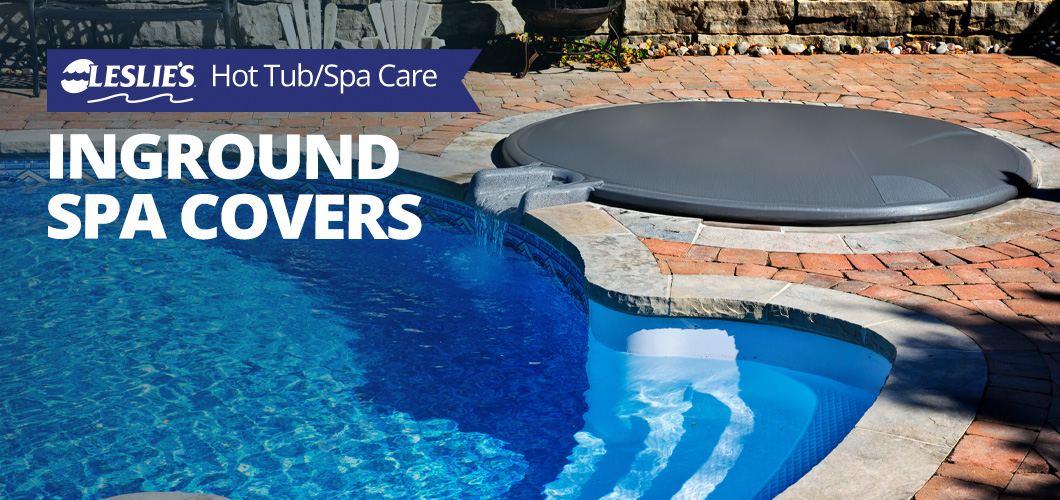
Inground Spa Covers
If you want to keep an inground spa warm for quick heat-up, or have it hot and ready to go - a spa cover is an absolute necessity. Inground spas can be built of concrete and plaster, or an acrylic spa placed into the deck. They can be standalone systems with their own equipment, or can be installed as part of an inground pool/spa combo. Here's a quick post on options for inground spa covers.
Floating Spa Blankets
Spa blankets which float on the water surface dramatically reduce evaporation and help retain some of the heat in the water. Solar spa blankets will also add heat to the spa water during periods of direct sunlight, but they are thin and not a great insulator.
Foam spa blankets are much thicker, around 1/4" of closed cell foam, with more than 3x the insulating ability. Foam blankets cost more, but are more durable and effective as far as floating blankets go - but there is a much more efficient and effective way to keep your spa or hot tub - hot.
Rigid Inground Spa Covers
The same spa cover design used for aboveground spas and hot tubs can be used on inground spa covers, with a few minor caveats.
Skirt
The skirt, the overhang of material on the cover's edge, is usually shortened or completely eliminated on inground spa covers - depending if your spa is raised above the surrounding deck, or flush with the deck. A raised spa, or spa with raised bullnose coping, or a rough edge may work better with a short skirt of 1-2".
Size
For inground spas, you'll find it easier to have the spa cover made 6-8" larger than the inside spa diameter. If only 2-3" larger, it can be difficult to center the spa cover over the spa, without it falling in - and don't forget that you'll be usually be stooping and bending as you install or remove an inground spa cover.
Storage
A place to put the spa cover safely, when it's not covering the spa, is important to protect a spa cover from breaking (believe me, I know what I'm talking about). My favorite design is the Cover Stand, by Cover Valet, but you can also build your own cover rack, to keep the cover off the ground, and prevent it from falling over (and also prevent people from falling into the cover!).
Straps
Another difference for inground spa covers is that they may or may not have locking straps. I recommend ordering inground spa covers with straps and clips, and installing the plastic clip half into the concrete or wood pool deck. This will hold the cover down in high winds, and prevent unsafe access to the spa water.
For covers without straps, you can use our 11' long cover wind straps, also known as Hurricane Straps. Sold as a set of two straps to cross over the top of the cover, with edge pads to protect the cover edge. Long straps make it easier to locate the plastic cover clips, and install them into an area not close to the spa. Strapping down an inground cover with over-the-top straps is the better way to go, and helps hold the cover down to the deck, to prevent heat leakage.
For a heavier duty strapping method, you can use pool safety cover anchors, buckles and springs to secure your spa cover to the pool deck. Fabric stores carry the nylon strapping material, usually called nylon webbing. For each strap, connect two buckles and two springs, one on each end, and connect the springs to brass anchors, inserted into the pool deck.
Custom Inground Spa Covers
We can make a spa cover for any size and shape of inground spa. Single hinge fold on covers up to 8' across, or a 3-panel design used on spas up to 12' diameter.
For the most durable inground spa covers, choose the heavier foam density and foam thickness - this will help hold it down, and protect against most damage from weather, animals or tree branches.